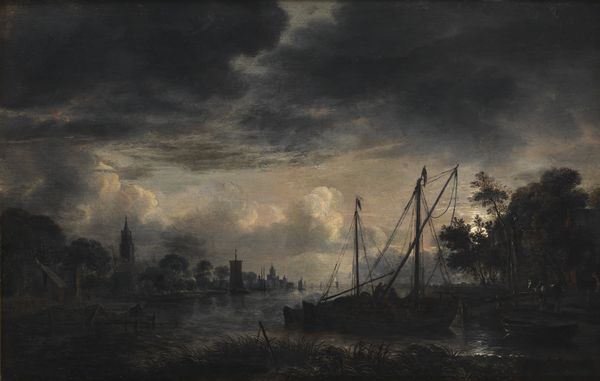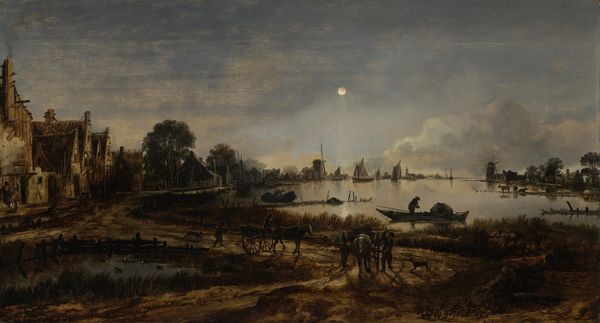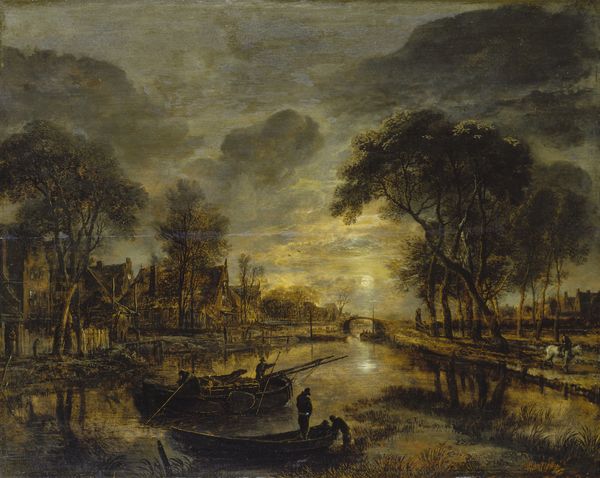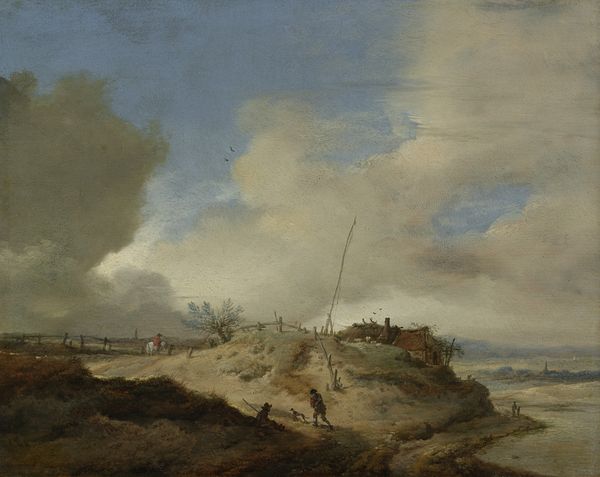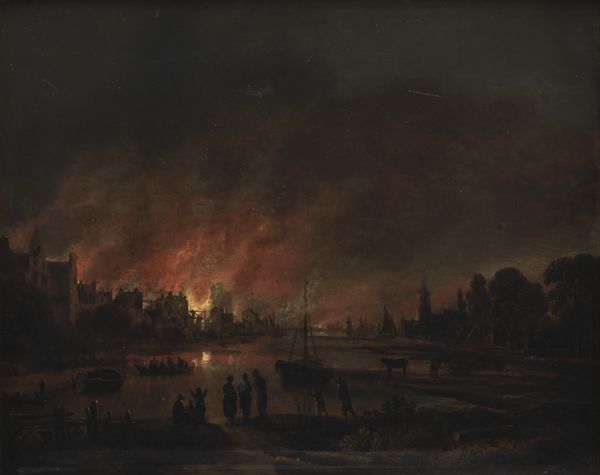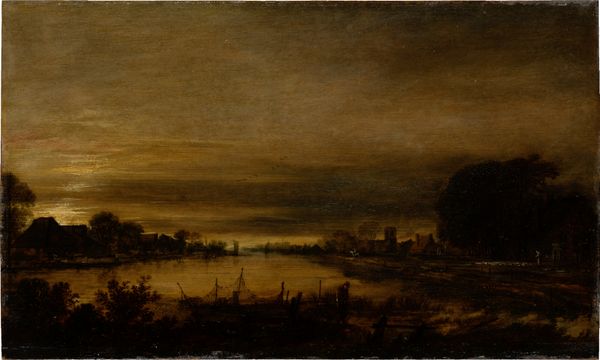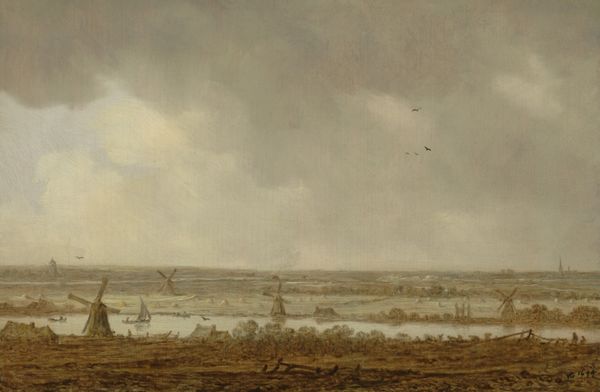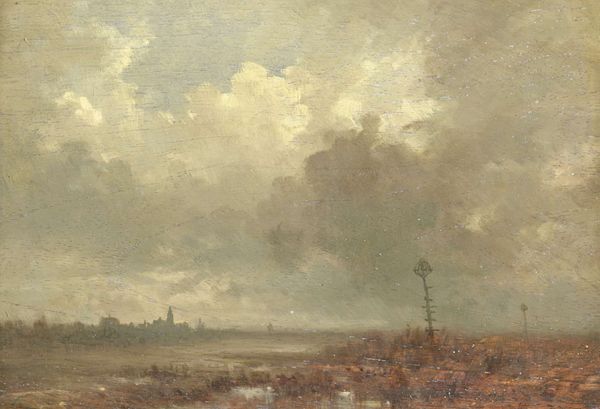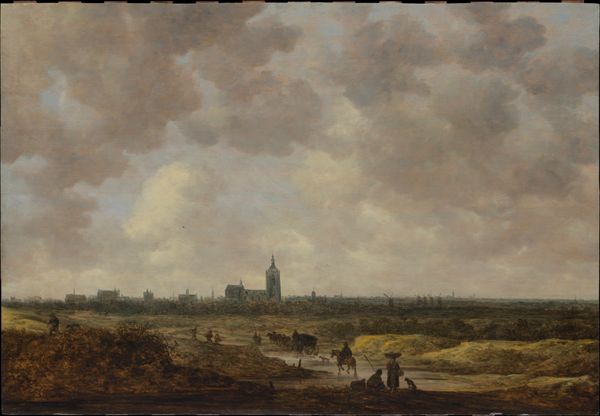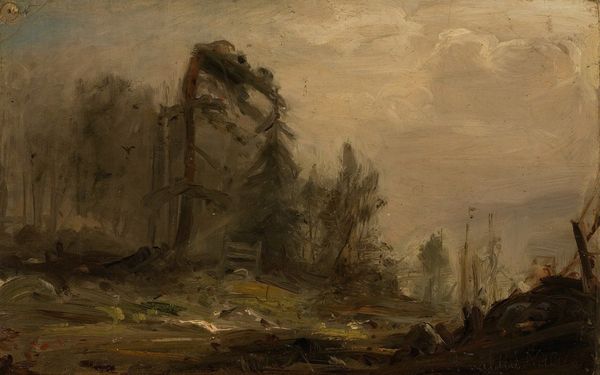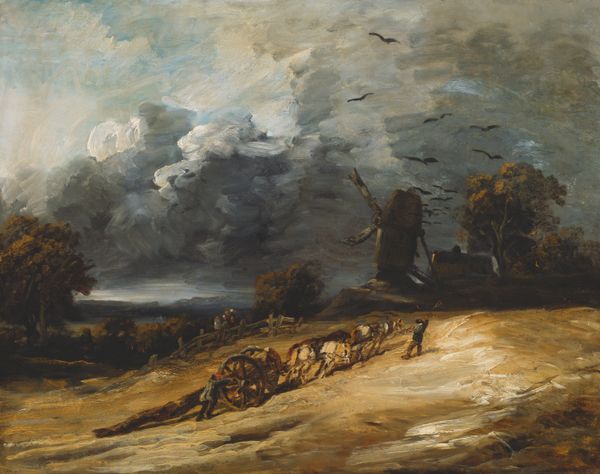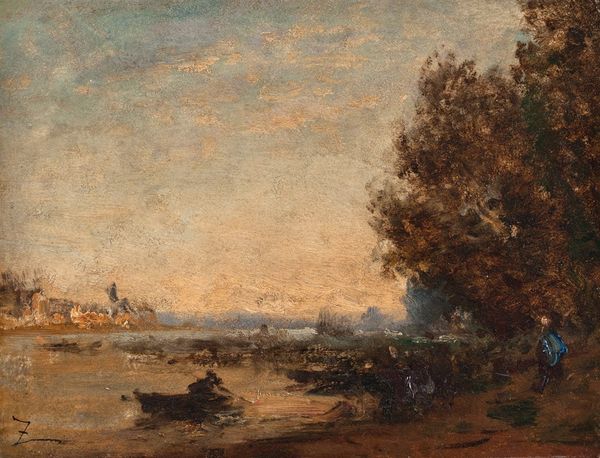
painting, oil-paint, wood
#
baroque
#
dutch-golden-age
#
painting
#
oil-paint
#
landscape
#
river
#
oil painting
#
chiaroscuro
#
wood
#
cityscape
#
genre-painting
#
charcoal
#
watercolor
#
realism
Dimensions: 33.5 cm (height) x 49.5 cm (width) (Netto)
Editor: Here we have Aert van der Neer’s "The Moon Rising over a Village," created sometime between 1618 and 1677. It's an oil painting on wood. The dark palette and luminous moon give the whole scene a very serene and almost melancholic feel. What’s your perspective on this artwork? Curator: The tranquility you observe belies a more complex social reality. Dutch Golden Age landscapes like these often aestheticize a specific type of civic order, tied to mercantile power. The moon, traditionally linked to cycles and the feminine, here illuminates a landscape carefully structured around trade and male enterprise, which might silence alternative perspectives, don’t you think? Editor: That's a fascinating point. I was mainly focused on the beautiful use of light. So, the inclusion of things like the windmill and the ships – is that a deliberate nod to commerce? Curator: Absolutely. Van der Neer isn’t just painting a pretty picture. The windmill represents harnessed power, industry; the ships, global trade and colonization. Consider how the moon, a symbol often associated with intuition and emotion, casts its light upon these emblems of capitalist expansion. What kind of power dynamic is being subtly reinforced here? Editor: So, it's less an innocent landscape and more a statement about the values of that society at that time? The beauty might be masking underlying power structures? Curator: Precisely. And it’s worth asking: Whose perspective is prioritized? Who benefits from this romanticized version of Dutch society? How does this image contribute to a larger narrative of Dutch exceptionalism and its impacts, especially for women, minorities, and colonized people? Editor: That completely changes how I see this painting. I’m no longer just admiring the aesthetic; I'm questioning the message. Curator: And that's the goal. Art invites us to critically examine the world around us, both then and now.
Comments
No comments
Be the first to comment and join the conversation on the ultimate creative platform.
